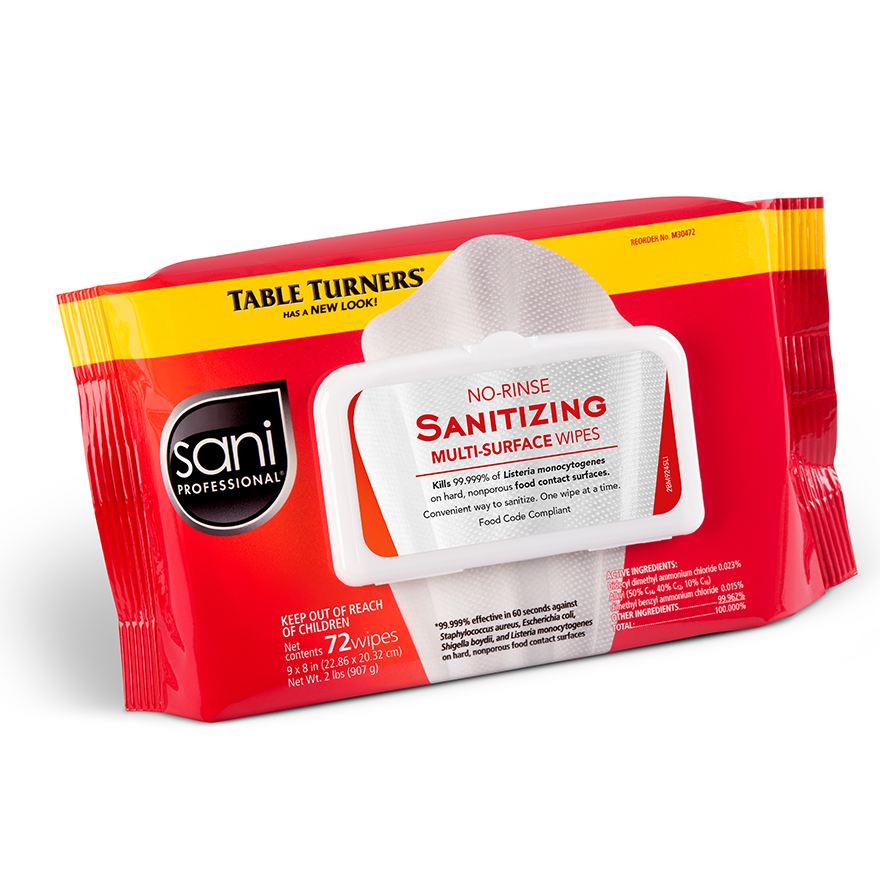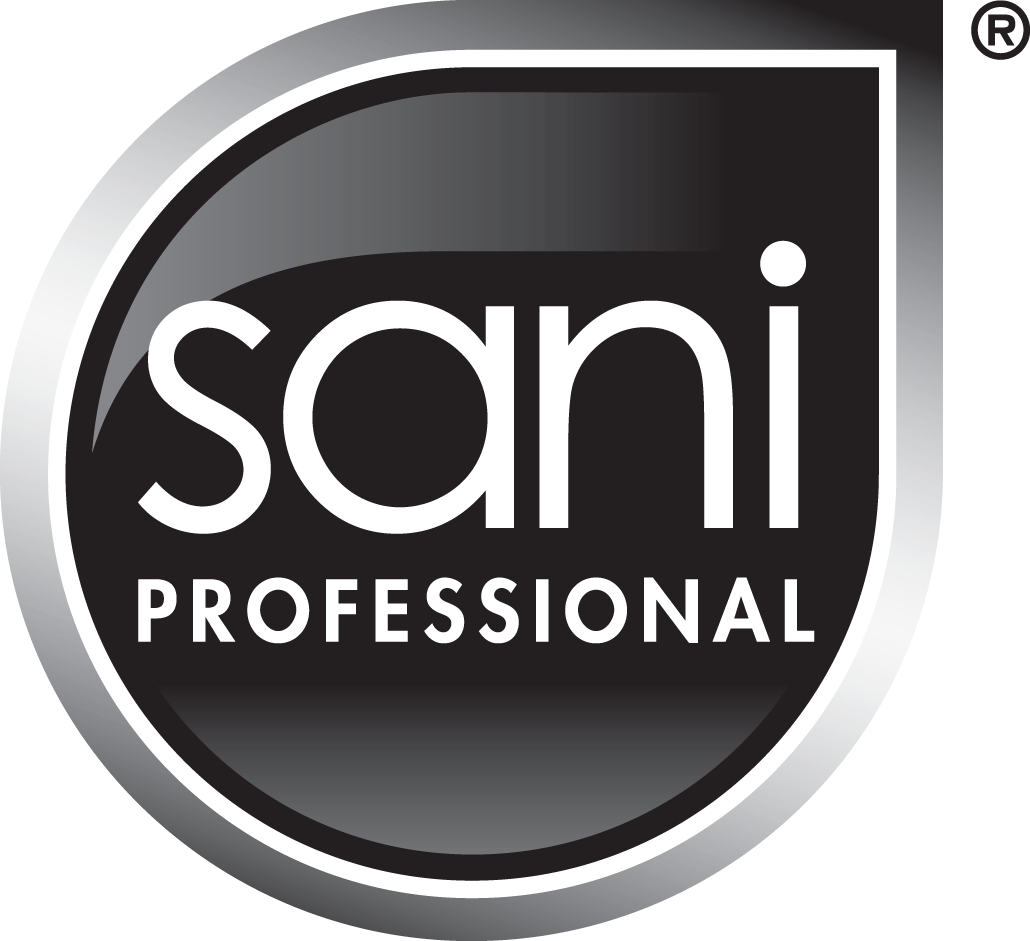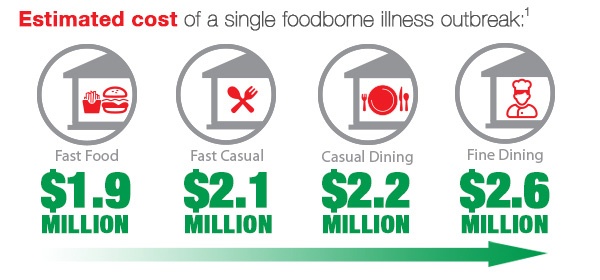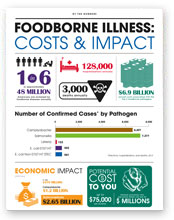Scary Stuff: germs, Outbreaks and Lawsuits
Make food safety part of the company culture. Everyone—on every shift—must be trained in proper food safety protocols.
According to the National Restaurant Association, a training program that focuses on basic food safety, cross-contamination, time and temperature, and cleaning and sanitation costs $15 for an online course per employee1—substantially less than the potential cost of an outbreak.
“Even a small outbreak involving five to 10 people can have large ramifications for a restaurant,” says Sarah M. Bartsch, research associate at the Global Obesity Prevention Center and lead author of the study. “Many prevention measures can be simple, like implement adequate food safety staff training for all restaurant employees and apply sufficient sick leave policies and can potentially avoid substantial costs in the event of an outbreak.”1
Prevention methods should include the 4 common pillars of food safety:
- Maintain clean and sanitary working environments
- Avoid cross contamination
- Cook foods thoroughly
- Control temperatures
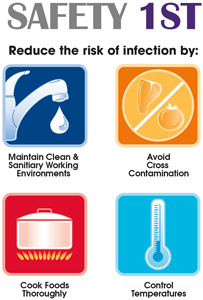
Sani Professional No-Rinse Sanitizing Multi-Surface Wipes Softpack can help reduce the likelihood of foodborne illness outbreaks. They:
- Require no mixing or measuring — Wipe. Toss. Done.™
- Help eliminate cross contamination — Single use
- Require little to no training
- Are effective against common foodborne pathogens including E. coli, Staphylococcus aureus, and Shigella boydii
- Are the first and only ready to use no-rinse sanitizing wipe effective against deadly Listeria monocytogenes.
